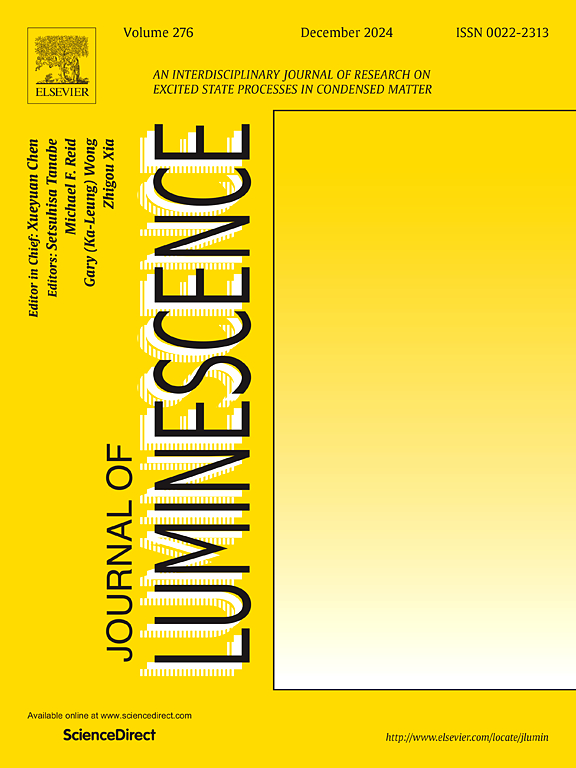基于双极接口外加层间结构的高效白光oled
IF 3.3
3区 物理与天体物理
Q2 OPTICS
引用次数: 0
摘要
具有超薄层结构的白色有机发光二极管(WOLEDs)仍然存在激子利用率低和光谱不稳定的问题。本文通过在蓝色外加层和超薄橙色层之间插入双极层来构建额外的反向系统间交叉(RISC)通道,从而实现高性能WOLED。通过精心调制发射层中的激子行为,该器件实现了最大电流效率48.54 cd/A和最大功率效率50.84 lm/W,国际委员会(Commission Internationale de l’Éclairage)坐标变化(0.019,0.011)从1295 cd/m2到20886 cd/m2。该器件的优异性能归功于通过双RISC通道增强了Fӧster从宿主到掺杂的能量传递和电荷载流子行为的调节。我们的研究结果展示了一种基于超薄层结构开发高性能WOLEDs的有前途的方法。本文章由计算机程序翻译,如有差异,请以英文原文为准。
Highly efficient white OLEDs based on bipolar interface exciplex interlayer architecture
White organic light-emitting diodes (WOLEDs) with ultrathin layer structure still suffer from inefficient exciton utilization and unstable spectra. Herein, high-performance WOLED is realized by inserting a bipolar interlayer between the blue exciplex-hosted layer and ultrathin orange layer to construct additional reverse intersystem crossing (RISC) channels. By elaborately modulating the exciton behavior in the emission layer, the device achieves maximum current efficiency of 48.54 cd/A and maximum power efficiency of 50.84 lm/W with Commission Internationale de l'Éclairage coordinates variation of (0.019, 0.011) from 1295 cd/m2 to 20,886 cd/m2. The superior performance of the device is attributed to enhanced Fӧster energy transfer from host to dopant via the double RISC channel and regulation of the charge carrier behavior. Our results demonstrate a promising approach for developing high-performance WOLEDs based on an ultrathin layer structure.
求助全文
通过发布文献求助,成功后即可免费获取论文全文。
去求助
来源期刊

Journal of Luminescence
物理-光学
CiteScore
6.70
自引率
13.90%
发文量
850
审稿时长
3.8 months
期刊介绍:
The purpose of the Journal of Luminescence is to provide a means of communication between scientists in different disciplines who share a common interest in the electronic excited states of molecular, ionic and covalent systems, whether crystalline, amorphous, or liquid.
We invite original papers and reviews on such subjects as: exciton and polariton dynamics, dynamics of localized excited states, energy and charge transport in ordered and disordered systems, radiative and non-radiative recombination, relaxation processes, vibronic interactions in electronic excited states, photochemistry in condensed systems, excited state resonance, double resonance, spin dynamics, selective excitation spectroscopy, hole burning, coherent processes in excited states, (e.g. coherent optical transients, photon echoes, transient gratings), multiphoton processes, optical bistability, photochromism, and new techniques for the study of excited states. This list is not intended to be exhaustive. Papers in the traditional areas of optical spectroscopy (absorption, MCD, luminescence, Raman scattering) are welcome. Papers on applications (phosphors, scintillators, electro- and cathodo-luminescence, radiography, bioimaging, solar energy, energy conversion, etc.) are also welcome if they present results of scientific, rather than only technological interest. However, papers containing purely theoretical results, not related to phenomena in the excited states, as well as papers using luminescence spectroscopy to perform routine analytical chemistry or biochemistry procedures, are outside the scope of the journal. Some exceptions will be possible at the discretion of the editors.
 求助内容:
求助内容: 应助结果提醒方式:
应助结果提醒方式:


